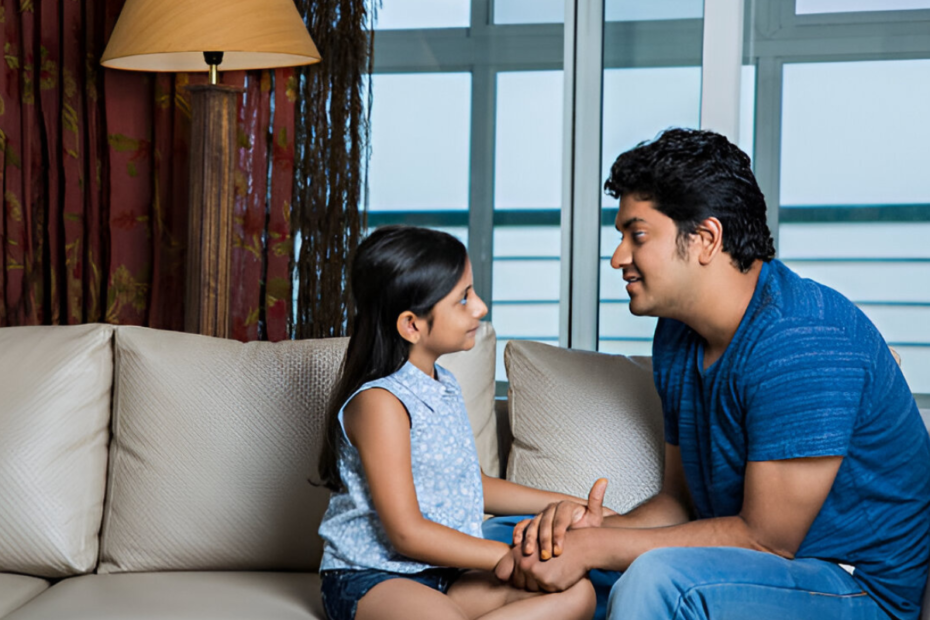Hey parents, I am Donna Smith, and welcome to my parenting blog. in this article, I will tell you about Behavioral Therapy for your teen. so stick with the article till the end.
first, we need to know what behavior therapy is and does your child needs Behavioural Therapy or not.
What Is Behavior Therapy?
Since all children learn from their environment, behavior therapy is an action-based approach grounded on this idea. Working with the child’s parents, caregivers, and other adults in their lives, a behavior therapist will create a plan that will promote good conduct and discourage bad one.
The secret to reducing bad conduct is not a reward but rather the absence of punishment.
While the behavior is ignored—like a tantrum before bed—going to bed without a fuss is rewarded. Additionally able to assist you in determining what triggers your negative behavior and in eliminating it is a behavior therapist.
Behavior therapy can help many different medical problems, including but not exclusive to:
- Problems with focus and hyperactivity
- Disorders on the autistic range
- Anxiety’s disorder
- Emotion— sadness Anxiety:
- Syndromes of Epilepsy
- Problems with behavior disorders
Since they are the ones who must follow the treatment plan, track trends, and help the child in adjusting to their new normal, the adults in a child’s life are quite crucial in behavior therapy.
Does Your Child Need Behavioral Therapy?
All parents know it’s not easy, especially when they have kids.
You think about them even when you’re not feeding them, playing with them, or even in the same building as them. In other words it’s a full time job in every sense of the word. And for many parents those worries are about how their kids are growing and changing.
Is this always or is it a problem?
How often do you or your partner ask yourself this about your child’s behaviour? Have you ever?
Even though tantrums and being angry or upset are pretty normal for kids, sometimes certain behaviours mean there’s a bigger issue. The behaviours mentioned in this guide can be treated with behaviour therapy.
Now let’s get to the benefits of it..
Benefits of Professional Behavioral Therapy

1. Social Skills
Behavior therapy helps children learn to understand emotions, gestures and facial expressions.
So children’s listening skills and social etiquette in social situations improves through behavior therapy training. With these skills your child will be able to build better relationships and live a better life and will also have confidence to interact with others.
2. Independent Living Skills
Behavior treatment programs can help children to use the bathroom, socialize and sleep through the night. By taking control of their life your child can prevent learned helplessness and build self esteem by advocating for themselves.
3. Tools for Parents to Support Their Child
The right behavior therapy program gives adults a foundation to apply with children at home and in school. Although a trusting relationship between the child and therapist is important, families should apply these therapeutic techniques outside of treatment for maximum effect.
Parents become cheerleaders for their child not just caregivers.
4. Create a Therapy Plan on a Individual Basis
No two people are the same when it comes to behavior therapy. Once the comprehensive assessment and history is done the therapist treating your child will create a therapy plan specific to your child’s needs and areas of concern. Because every child learns differently and has different triggers for behavior, the only way to get real results is to do it individualized.
Behavior Therapy Techniques
Behavioral treatment can use many techniques most of which are based on operant and classical conditioning.
They are good for children in all sorts of situations and to encourage and reinforce good and positive behaviors.
For example response prevention and exposure therapy can help young people overcome obsessive compulsive disorders; systematic desensitization can help them to face their fears.
A few of the techniques used more frequently are listed below.
Building hierarchies of fear
Helping teenagers to manage difficult situations requires skill development which is mostly done through graded exposure.
You need to create a list of the small steps that will take the young person to their goal of overcoming their fear or problem to start breaking down the challenges or fears (Stallard, 2021, p. 77). And you need to know where these steps will happen.
A child who avoids busy places like the cinema or train.<|start_header_id|><|start_header_id|><
The therapist is able to assist the child with selecting a goal that they can begin with and work toward, such as meeting a friend for a playdate, once the child has been recognized and it has been comprehended. After that, the youngster evaluates their level of anxiety as they think about each step or activity that is involved in achieving their objective.
While entering the playground at peak hours may earn you a score of 90 out of 100, walking down the street on a Sunday morning when it is quiet may only earn you a score of 60 out of 100.
According to Stallard (2021), the development of a fear hierarchy enables the child, as well as the child’s parents, to select specific behaviors and acknowledge their achievements in a step-by-step manner.
Exposure on a scale
After the hierarchy of fears, the child can then enter a phase of graded exposure where they start to face their fears, bit by bit.
The child learns what they can handle without avoiding certain events or circumstances or using bad habits by gradually and bit by bit exposing them to more anxiety (according to a plan they have agreed to).
But the child must have a clear understanding of the why behind the process and the reason for facing their fear. The therapist will help the child understand:
- Why do they avoid situations and use repetitive activities to manage their anxiety?
- Avoidance and routines give them some short term relief but don’t help them in the long run.
- The different ways they might face their fears might help them get their life back.
- The idea is they can take their worries with them rather than let worry stop them from doing things they want to do in their life.
- How can they learn to tolerate uncomfortable feelings to overcome their fear.
Response prevention
Teenagers with obsessive-compulsive disorder (OCD) often use safety behaviours — repetitive and compulsive habits to prevent bad things from happening (Stallard, 2021).
These might include excessive cleaning (of themselves or objects), endless checking (faucets are off, doors are locked), or counting (performing actions a certain number of times).
These behaviours give temporary relief from anxiety but don’t last.
The goal of response prevention is to face the fear without doing the safety behaviour.
The type of intervention depends on the fear the child has. Examples for a child with OCD might be:
If they are worried about an infection, ask them to touch a toilet seat and don’t wash their hands. Change the order in which something is given to them, say their favourite books or toys, if they need to have things in order or arrange things in a certain way to prevent something bad from happening.
If they have a fear of a certain situation, say a running faucet causing a flood, tell them to leave the faucet running until they have dried their hands.
Again, the child needs to have a clear understanding of the why behind the approach and why it’s good.
For example, you might explain to them that although doing their routines over and over again might give them short term relief, they can get the knowledge they don’t need it when they become aware of their worries.

As a mom of teens and a pediatric Psychologists, I struggled to build trust. Through openly sharing my ups and downs raising two independent-minded kids, I provide practical tips to improve communication and confidently guide your teens into adulthood.
